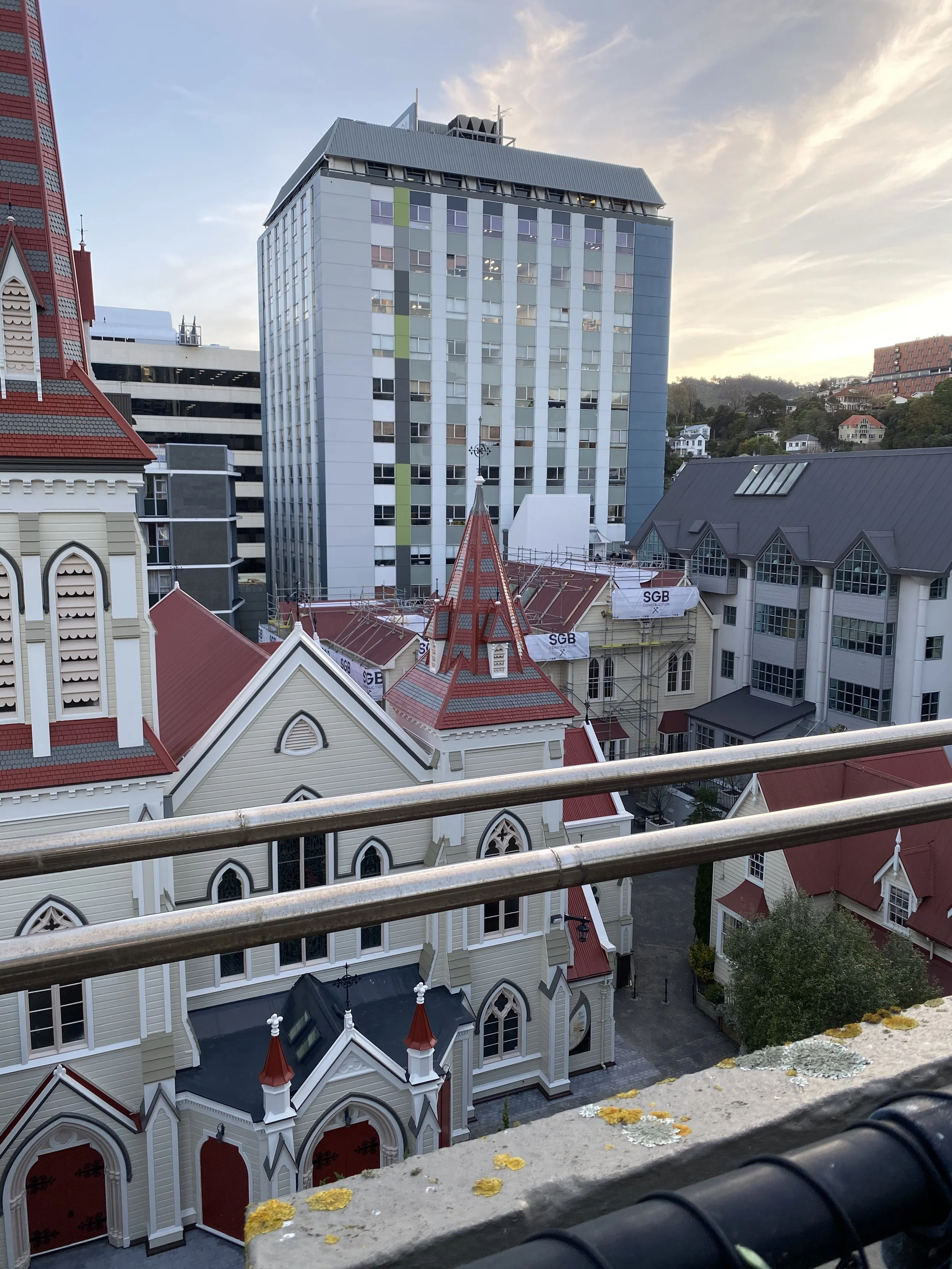Saint John’s Church – Pro-Active vs Reactive Maintenance
For almost a decade now, SGB Construction has been managing ongoing maintenance at Saint John's in the City, a Category 1 Heritage Listed church on the corner of Willis and Dixon street. The site is made up of four buildings, all ranging in age, character and purpose. The Church itself, a convention centre, Spinks House and an office building. SGB began ongoing works at Saint John's after an emergency phone call came through to replace failing window hardware during a storm. Over the years work has included the construction of an access ramp, rehanging the massive church doors and upgrading all the associated hardware, replacing membrane roofs on the conference centre, and recladding walls of the Spinks House.
Working on heritage listed buildings is rewarding but presents its own challenges. Often buildings will be subject to the decisions of conservation architects, and put simply, anything that is replaced, must be put back exactly as it was found. This means we get the opportunity to step back in time and work with native timbers in a style of carpentry not seen often in modern building. The real challenge of course is retaining the aesthetic of yesteryear, while installing modern materials behind the scenes to make the building watertight and structurally sound.
We have learned a lot from Saint John’s Church, both in regard to heritage sites, but also how to better manage on-going maintenance. As the years have gone by, we have moved from being reactive to proactive. That first callout, where it looked like a storm was about to blow the windows in, is really the definition of reactive building - hustling over to site in a mild panic and trying to deal with a problem as it unfolds in real time. The same could be said for the numerous leaks we have chased down. On the other hand, proactive maintenance is undertaking sections of work to pre-empt such situations. It requires trust between builder and client, and it can require a higher initial investment. The advantage is it allows for works to be co-ordinated effectively, and economies of scale to come into effect.
For instance, let us say a section of external weatherboard cladding is looking like it has issues of deferred maintenance. Just across from it is a roofing valley with questionable drainage. Its summer, and so no one is too concerned about it.
Winter comes around, with high wind and driving rain. Suddenly there is a leak, maybe from the cladding, maybe from the valley. Some poor individual attempts to tarp the area, in the rain, putting themselves at risk. Scaffolders are called in to encapsulate the roof. Builders spend two days trying to chase the leak, and in the end give up and fully reroof the valley. Scaffold comes down. Next week the leak is back. Scaffold goes back up so the cladding can be assessed. Two days are written off because the rain is too heavy. Cladding is replaced. The council and the conservation architect are grumpy because they wanted to be informed of work with more notice. If this sounds expensive and inefficient it is because it is exactly that.
Proactive building is identifying problems in advance. The section of cladding and the dodgy valley? Well, it is going to need fixed in the next few years anyway – why not book in now while the weather is good. One scaffold can do the lot, with no need for encapsulation. We can get the roof flashings and weatherboards all delivered at the same time and dispose of all the waste in the same tip run. Also, by fixing it now, before any real obvious leaks start, we have protected the structure of the building from moisture. Pro-active building requires thinking ahead but is doubly efficient for half the cost. Our work at Saint John’s going into the future will be following this model.





